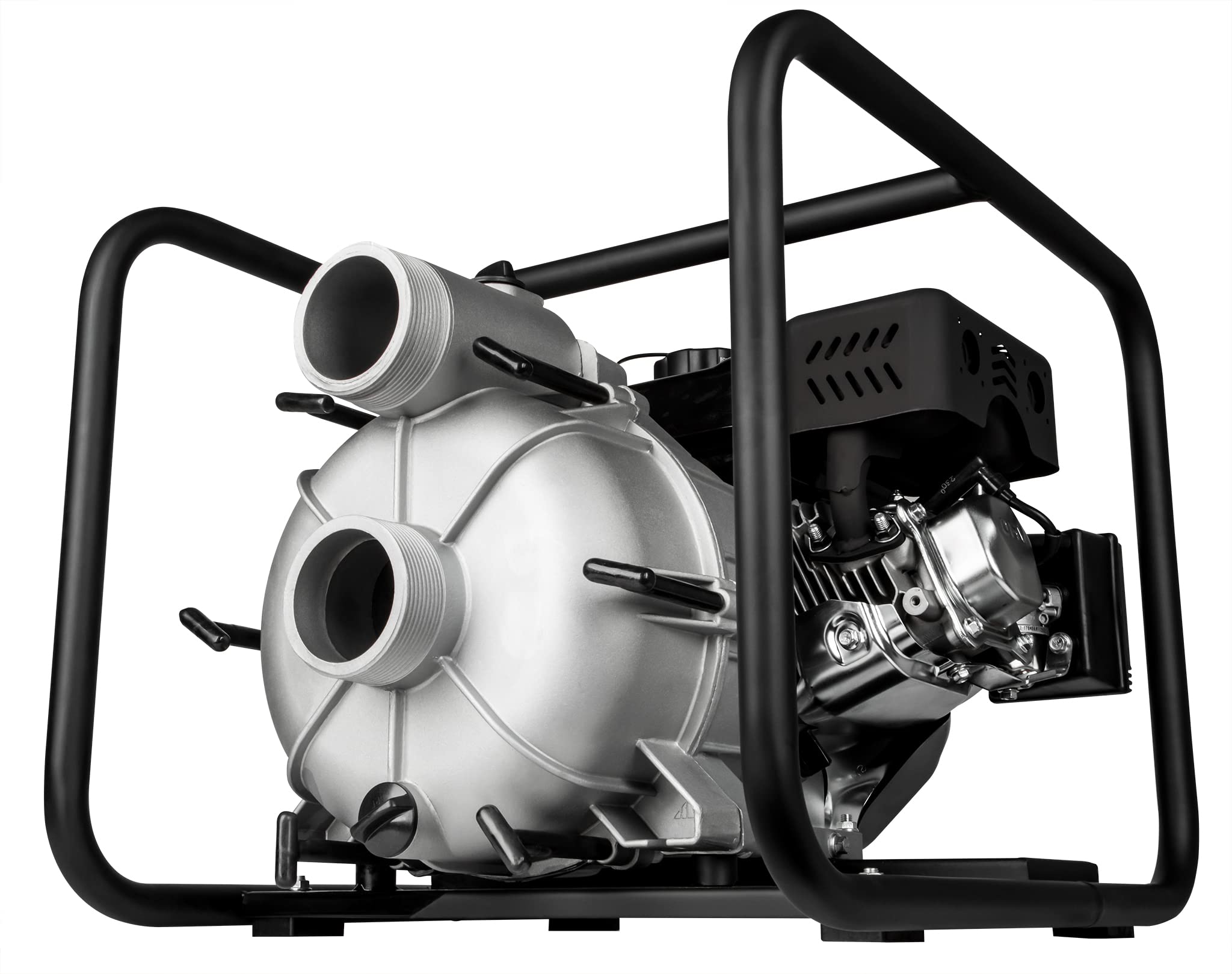Why You Need a Trash Pump

If you’re a business owner, you know that waste management is important. Not only is it important for the environment, but it’s also important for your bottom line. That’s why you need a trash pump. A trash pump can help you move waste quickly and easily, saving you time and money. This blog post will discuss the benefits of using a trash pump and how it can help your business run more efficiently.
What is a trash pump, and what are its benefits
A trash pump is a special type designed to handle solids and other debris in wastewater or sewage. It uses an impeller that forces waste through a suction line, which pumps it into a discharge line. The trash pump features a recessed impeller design that allows for passing larger solids than other pumps, eliminating the need for manual removal of tough debris.
Trash pumps are incredibly useful in many industries. They can be used for large volumes of water from flooded areas or basements and wastewater from facilities such as paper mills and breweries. They are also used in agricultural applications where they can help with drainage and water reclamation projects.
Trash pumps offer numerous benefits over traditional pumps. For one, they are more durable due to their rugged construction and the strong materials used in their manufacturing process. Trash pumps also feature larger intake ports, which allow them to handle more solid material than other pumps, meaning less time spent manually removing solids.
Trash pumps require less maintenance than traditional pumps due to the lack of internal components exposed to clogging elements like mud or sand. This helps keep downtime at bay and keeps costs low.
Trash pumps provide better efficiency when dealing with large volumes of waste due to their high capacity and flow rates. This means jobs get done quicker with less hassle and expense, making them an ideal choice for many industrial applications dealing with bulky solids or sticky liquids.
How does a trash pump work
A trash pump is an essential tool to move and evacuate dirty water, sludge, sewage, and other kinds of waste liquids in a variety of settings. With these pumps, it is possible to transfer liquids containing debris or suspended solids up to three inches in diameter with high head capabilities up to 140 feet.
Trash pumps are typically self-priming centrifugal pumps that create a suction force that draws liquid in from the surface. This suction force helps promise a continuous flow without any interruption.
Moreover, trash pumps are designed for stationary and mobile applications, including job sites and industrial processes needing high-volume fluid handling solutions.
Besides the traditional gasoline or diesel engines, there are also electric designs driven by motors with different power ratings (i.e., three-phase or single-phase). Some come equipped with cooling systems for extended operation in hot conditions, such as heavy-duty oil baths that ensure the engine’s longevity and reduce overheating problems. The motor shafts can be made of stainless steel, which provides superior durability, while others are made of traditional carbon steel materials.
Trash pumps come with several features such as adjustable float switches that shut off the pump when the water level gets too low, thus preventing damage due to dry running; agitators located on the bottom of the impeller housing that helps prevent material clogging; removable filters for easy maintenance; as well as various coupling types depending on your specific needs. These models can handle capacities ranging from 500 gallons per minute (GPM) to 6500 GPM if required for larger-scale operations and tough environments like mines or quarries.
What are some of the applications for a trash pump?
A trash pump is a type of pump designed to move large volumes of water or other liquids containing solids, solids, and debris. It’s ideal for bypass pumping applications in industrial settings such as construction sites and quarries.
Trash pumps are equipped with an impeller that is open enough to pass large amounts of material without clogging. In addition, these pumps have larger volumes than ordinary pumps, which helps reduce the risk of cavitation.
These pumps can be used in many applications, including sewage bypassing, flood control, marine dock unloading, fish hatcheries, mining operations, and dredging projects. They are also used in paper mills to transport waste products from one area to another.
In addition to being used for industrial purposes, recreational boats often use trash pumps to clean up after a day on the water or when boating in shallow waters where other types of pumps cannot go. The high capacity and efficient design make them perfect for these applications.
Trash pumps are available in a variety of sizes and power levels, so it’s easy to find one that will meet your specific requirements. With proper maintenance, these reliable machines can provide you with years of reliable service at an affordable cost.
What are the different types of trash pumps?
Trash pumps are pumps designed to move liquids containing solids, suspended solids, and debris. They are used in various industrial applications, including wastewater treatment, construction sites, flood control, agriculture, etc. Trash pumps come in various designs and styles depending on the application you will use them.
Centrifugal trash pumps are the most common type and work by spinning an impeller to draw liquid in and then push it out through a discharge outlet. These pumps are ideal for high-flow applications with large or semi-solid particles that can flow easily.
Submersible trash pumps are popular for applications involving moving water with high levels of suspended solids or debris. These pumps feature a unique seal and motor that allow them to be submerged into the water source without experiencing damage from moisture or corrosion.
Diaphragm trash pumps are usually self-priming and feature flexible diaphragms that pump viscous fluids and abrasive materials like mud, sand, or sludge. This type of pump is ideal for pumping thick liquids that would otherwise clog conventional centrifugal pumps.
Positive displacement trash pumps use an internal mechanism like rotors or pistons to drive fluid through the system at a steady rate regardless of pressure variations in the source material. A positive displacement pump is great for low-viscosity applications with abrasive components because they provide precise metering capabilities while avoiding cavitation when pumping against pressure differentials.
Trash transfer pumps move large volumes of trashy liquids quickly and efficiently from one location to another via suction hose or other conveyance systems such as open channels, pipelines, or culverts. These pumps often feature self-priming capabilities, making them ideal for quick setup in applications where manual priming is impossible.
How do you choose the right trash pump for your needs?
When selecting the right trash pump for your needs, there are a few important considerations to keep in mind. First, you will need to consider the type of materials that you plan to pump and ensure that the trash pump is suitable for them. Trash pumps are designed to handle solids and debris in various sizes, so it’s important to make sure that the one you choose can effectively handle what you’re trying to move.
You’ll also need to consider how much material you plan on pumping. The size of the trash pump should correspond with the capacity of the materials being handled, so it’s important to make sure that the model you choose can handle what you need. Larger trash pumps typically feature higher flow rates than smaller models, but this needs to be balanced against other factors such as power consumption and efficiency.
The construction material of the pump itself is another key factor when selecting a trash pump model. In many applications, stainless steel is popular as it offers excellent corrosion resistance and durability. Other choices include cast iron and aluminum, depending on your specific application needs. It’s also important to look at features like control panels or frequency controllers if they are available on certain models, which may provide greater flexibility when operating your equipment.
Look at additional features that may include with a particular model, such as self-priming mechanisms or built-in thermal protection systems, which provide extra protection against potential damage due to over-heating or extended operation times. It’s also important to check warranty information and any maintenance requirements associated with your chosen model to ensure long-term use and reliability from your trash pump investment. All these factors will help ensure that you select the best trash pump for your application needs.
Where can you buy a trash pump?
There are many sources where one can buy a trash pump, including local hardware stores, home improvement centers, and online retailers. The best option for purchasing the right type of trash pump for your needs is to research the various online models before making a purchase.
How to use and maintain a trash pump
A trash pump is an essential equipment that helps keep liquid clean and debris-free. It is especially useful in industrial and commercial settings where we must continuously move liquid from one area to another. A trash pump works by sucking in dirty liquid and then pumping it out at a higher pressure, allowing it to pass through screens or filters that separate solids from the liquid.
Using a trash pump is relatively straightforward:
- Connect the intake hose to the source of dirty water
- Connect the discharge hose to somewhere for the water to exit
- Turn on the power
- Turn on the switch
- Adjust any valves or controls
- Monitor operation
- Please turn off the switch and power it when finished
When using a trash pump, it’s important to ensure all hoses are tightly connected with no leaks, as this can cause problems with water flow in and out of the pump. Additionally, you should ensure all valves are closed before turning on the power and turn them off after turning off the pump. When adjusting valves or controls, always do so slowly, as sudden changes may damage internal components of the pump or cause clogging due to sudden pressure changes in either direction.
Conclusion
Trash pumps provide an effective solution for large-scale operations dealing with contaminated liquids and solid waste materials by providing a reliable way of transferring them at high speeds without clogging or creating undue wear on engine parts.





